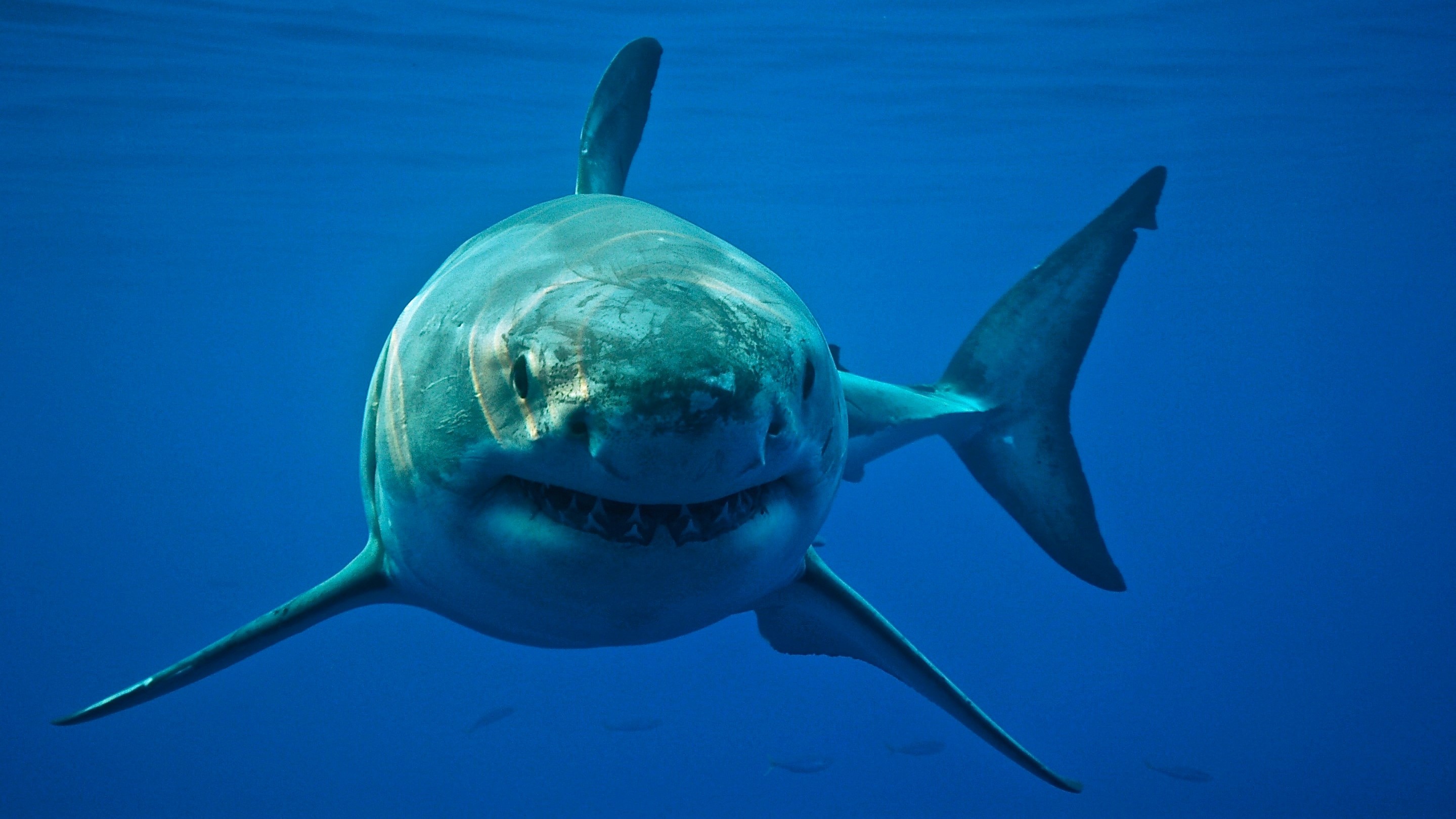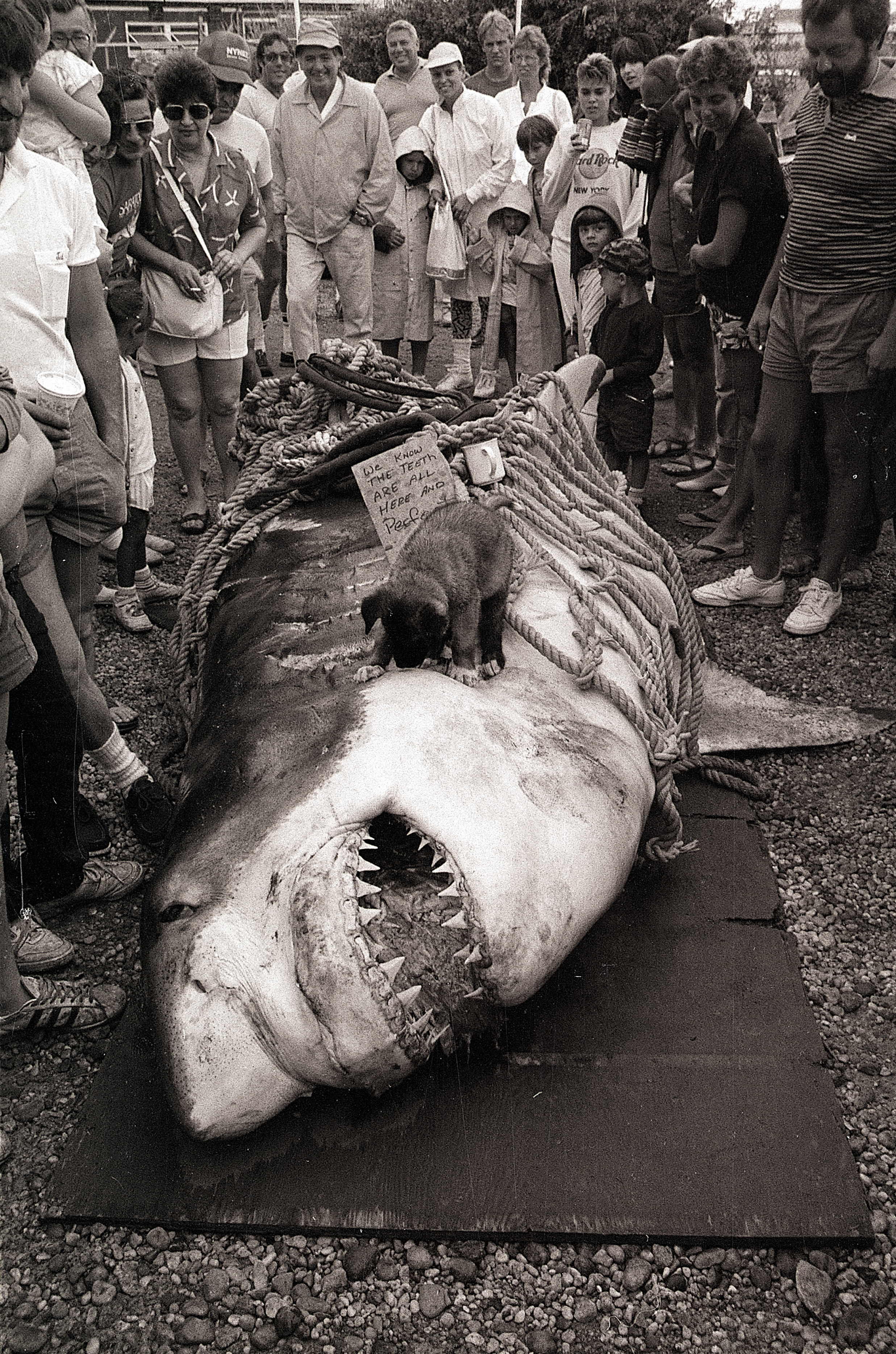Great white sharks are moving north. New NatGeo SharkFest show explains why
The great white shark population off in the North Atlantic plummeted during the 20th century — but the species is now making a major comeback, and recolonizing its former home.
Great white sharks were once rare in northern waters but are becoming an increasingly common sight. Until 2006, there had been just 32 recorded sightings of great white sharks off Canada's east coast, but the apex predators are now showing up there almost daily. To highlight the sharks' intriguing move, "Shark Below Zero," a new program from National Geographic, explores the factors that are driving these animals into frigid northern waters.
As great white sharks (Carcharodon carcharias) spread north, shark attacks there are also increasing, albeit minutely.
In general, great white shark attacks are extremely uncommon; a study published earlier this month revealed that great whites have almost no interest in eating humans. In the North Atlantic, these attacks are even rarer. But in 2020, 63-year-old Julie Dimperio Holowach was swimming off the coast of Bailey Island, Maine, when she was bitten by what is believed to be a great white, due to a tooth fragment the shark left behind. This was the state's first documented fatal shark attack.
The following year, a 21-year-old woman was bitten off the coast of Cape Breton, Canada, but survived. This was the first time anyone had been attacked by a great white shark off Canada's coast since the 1800s, according to the Canadian Shark Attack Registry.
Related: Watch a great white shark devour a seal off the coast of Cape Cod, shocking nearby whale watchers
"What are these white sharks doing here? Greg Skomal, senior fisheries biologist at Massachusetts Marine Fisheries, said in a clip from "Shark Below Zero." "What's drawing them?"

The apex predators are being attracted to the frigid waters by an abundance of their favorite prey — seals. The seal population in the region has exploded in the last 60 years thanks to conservation efforts such as the 1972 U.S. Marine Mammal Protection Act, going from around 2,300 individuals in 1960 to 380,000 in 2017.
Sign up for the Live Science daily newsletter now
Get the world’s most fascinating discoveries delivered straight to your inbox.
"A lot of folks think white sharks in the waters off New England and Canada are a new phenomenon, but there are some great accounts of white sharks from fishermen in the early to mid-1900s — and earlier — in that region before shark populations coast-wide took a nosedive," Megan Winton, staff scientist at the Atlantic White Shark Conservancy, told Live Science in an email. Winton is in the team investigating the shift to northern waters among great whites in the film, which is part of NatGeo's SharkFest season — a four week event celebrating sharks. Check out our how to watch Shark Fest 2023 guide if you want to see more.
The increased sightings in the area is down to an abundance of prey and an increase in shark numbers, she added. In the 20th century, the great white population was decimated, falling by around 80%. To stop the decline, various U.S. laws protecting white sharks were introduced, and numbers are returning to healthy levels.

"What we're seeing right now is the species recolonizing its historic range as it recovers and as populations of seals, one of their favorite foods, rebound following protections that were put into place for marine mammals in the 1970s," Winton said. "But because their numbers were so low and they were so hard to study in the region for so long, we know next to nothing about white shark behavior in the northern extent of their range, which is why this expedition was so exciting to be a part of."
And Winton said the shifts we are seeing now are just the start. Great white sharks are partially warm blooded, so while they can survive in cold water, their preferred temperature range is between 50 and 80 degrees Fahrenheit (10 to 26.5 degrees Celsius). Water temperatures off Nova Scotia, for example, generally only exceed the lower range there for about four months of the year.
But climate change is altering ocean temperatures across the globe — and a warming ocean is likely to change the geographic range of white sharks. "The waters off the northeastern U.S. and Canada are among the fastest warming ocean regions on the planet," Winton said. "Scientists are already documenting northward shifts in other species, and white sharks and their prey are likely to be no exception.
"As the ocean continues to warm, white sharks are likely to move further north and stay in northern waters for longer. There's no doubt that climate change is going to have a major impact on all life in the ocean, and the shifts we're seeing now are likely just the beginning," Winton added.
"Shark Below Zero" premieres on Disney+ and Hulu on July 2, and National Geographic on July 5.

Hannah Osborne is the planet Earth and animals editor at Live Science. Prior to Live Science, she worked for several years at Newsweek as the science editor. Before this she was science editor at International Business Times U.K. Hannah holds a master's in journalism from Goldsmith's, University of London.










